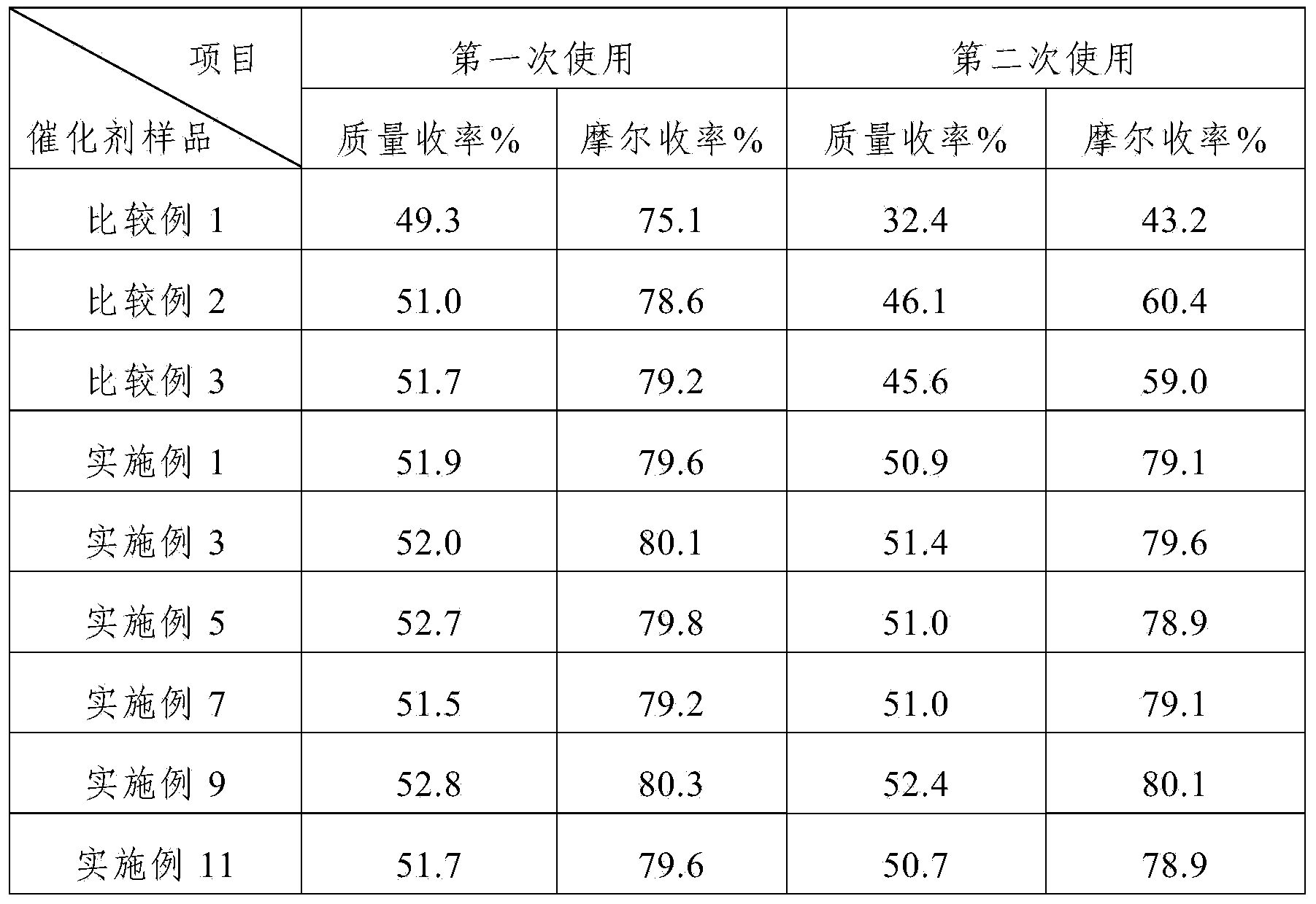Palladium-carbon catalyst capable of being applied mechanically for meropenem synthesis
A technology of palladium-carbon catalyst and meropenem, which is applied in the field of palladium-carbon catalyst for the synthesis of meropenem, can solve the problems of harsh environmental temperature requirements, inconvenient industrial production, and catalysts that cannot be applied mechanically, and achieve guaranteed speed, moderate activity, and improved sulfur resistance performance Effect
- Summary
- Abstract
- Description
- Claims
- Application Information
AI Technical Summary
Problems solved by technology
Method used
Image
Examples
Embodiment 1
[0028] The applicable palladium-carbon catalyst for the synthesis of meropenem in this embodiment includes an activated carbon carrier, palladium, transition metal nanoparticles and amorphous alloy nanoparticles of palladium and transition metal supported on the activated carbon carrier; the palladium-carbon catalyst in the palladium-carbon catalyst The quality of the active carbon carrier is 5% of the mass of the activated carbon carrier, and the quality of the transition metal is 0.1% of the mass of the activated carbon carrier; the activated carbon carrier is an activated carbon carrier treated with water-soluble sulfide; the transition metal is cobalt;
[0029] The preparation method of described palladium carbon catalyst comprises the following steps:
[0030] Step 1. Dissolve sodium sulfide containing 0.08g of sulfur in water to prepare a sulfide solution with a mass concentration of 0.1%, and then prepare a sulfide solution with a particle size of 200-300 mesh and a spec...
Embodiment 2
[0036] This embodiment is the same as Embodiment 1, except that the transition metal is iron, nickel, copper, zinc, chromium or cerium.
Embodiment 3
[0038]The applicable palladium-carbon catalyst for the synthesis of meropenem in this embodiment includes an activated carbon carrier, palladium, transition metal nanoparticles and amorphous alloy nanoparticles of palladium and transition metal supported on the activated carbon carrier; the palladium-carbon catalyst in the palladium-carbon catalyst The quality of the activated carbon carrier is 6% of the mass of the activated carbon carrier, and the quality of the transition metal is 0.5% of the mass of the activated carbon carrier; the activated carbon carrier is an activated carbon carrier treated with water-soluble sulfide; the transition metal is cobalt;
[0039] The preparation method of described palladium carbon catalyst comprises the following steps:
[0040] Step 1. Dissolve sodium sulfide containing 0.08g of sulfur in water to prepare a sulfide solution with a mass concentration of 0.5%, and then prepare a sulfide solution with a particle size of 200-300 mesh and a sp...
PUM
| Property | Measurement | Unit |
|---|---|---|
| particle size | aaaaa | aaaaa |
| specific surface area | aaaaa | aaaaa |
Abstract
Description
Claims
Application Information
 Login to View More
Login to View More - R&D
- Intellectual Property
- Life Sciences
- Materials
- Tech Scout
- Unparalleled Data Quality
- Higher Quality Content
- 60% Fewer Hallucinations
Browse by: Latest US Patents, China's latest patents, Technical Efficacy Thesaurus, Application Domain, Technology Topic, Popular Technical Reports.
© 2025 PatSnap. All rights reserved.Legal|Privacy policy|Modern Slavery Act Transparency Statement|Sitemap|About US| Contact US: help@patsnap.com


